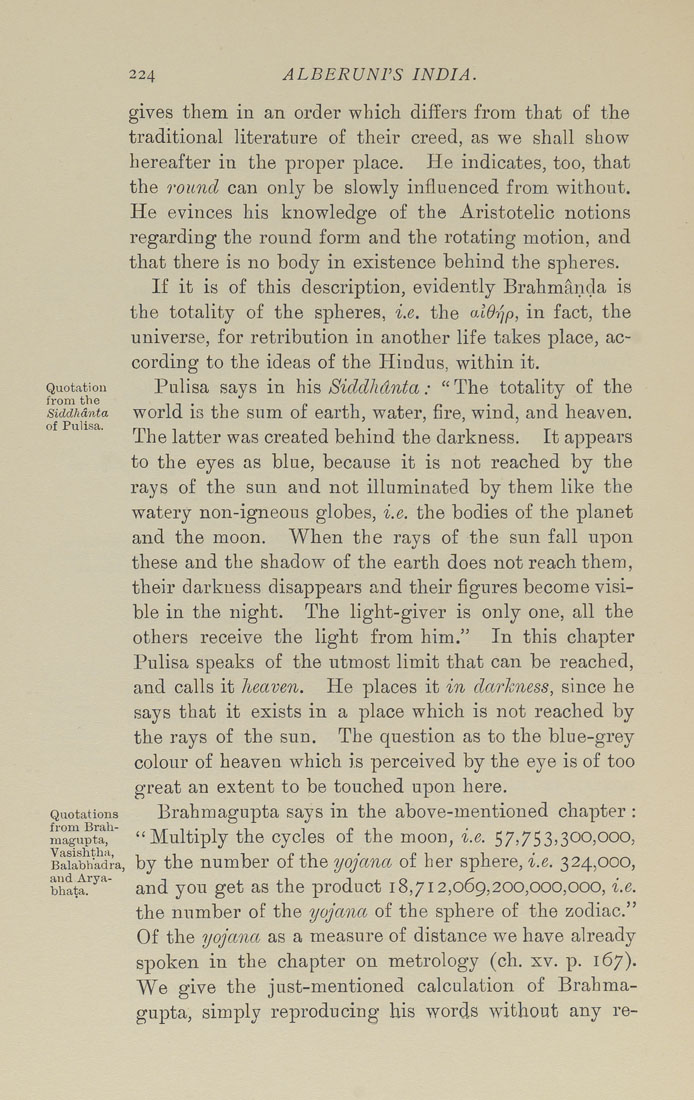224
ALBERUNPS INDIA.
Quotation
from the
Sidd/idnta
of Pulisa.
Quotations
from Brah¬
magupta,
Vasishtha,
Balabhadra,
and Arya¬
bhata.
gives them in an order which differs from that of the
traditional literature of their creed, as we shall show
hereafter in the proper place. He indicates, too, that
the round can only be slowly influenced from without.
He evinces his knowledge of the Aristotelic notions
regarding the round form and the rotating motion, and
that there is no body in existence behind the spheres.
If it is of this description, evidently Brahmanda is
the totality of the spheres, i.e. the aW-qp, in fact, the
universe, for retribution in another life takes place, ac¬
cording to the ideas of the Hindus, within it.
Pulisa says in his Siddhdnta: " The totality of the
world is the sum of earth, water, fire, wind, and heaven.
The latter was created behind the darkness. It appears
to the eyes as blue, because it is not reached by the
rays of the sun and not illuminated by them like the
watery non-igneous globes, i.e. the bodies of the planet
and the moon. When the rays of the sun fall upon
these and the shadow of the earth does not reach them,
their darkness disappears and their figures become visi¬
ble in the night. The light-giver is only one, all the
others receive the light from him." In this chapter
Pulisa speaks of the utmost limit that can be reached,
and calls it heaven. He places it in darkness, since he
says that it exists in a place which is not reached by
the rays of the sun. The question as to the blue-grey
colour of heaven which is perceived by the eye is of too
great an extent to be touched upon here.
Brahmagupta says in the above-mentioned chapter :
"Multiply the cycles of the moon, i.e. 57,753,300,000,
by the number of the yojana of her sphere, i.e. 324,000,
and you get as the product 18,712,069,200,000,000, i.e.
the number of the yojana of the sphere of the zodiac,"
Of the yojana as a measure of distance we have already
spoken in the chapter on metrology (ch, xv. p. 167).
We give the just-mentioned calculation of Brahma¬
gupta, simply reproducing his words without any re-
|








